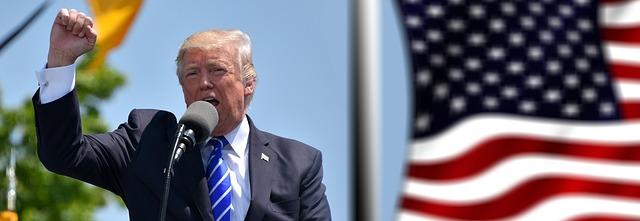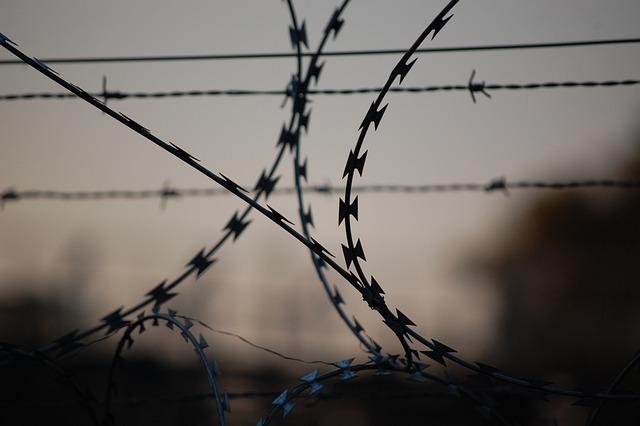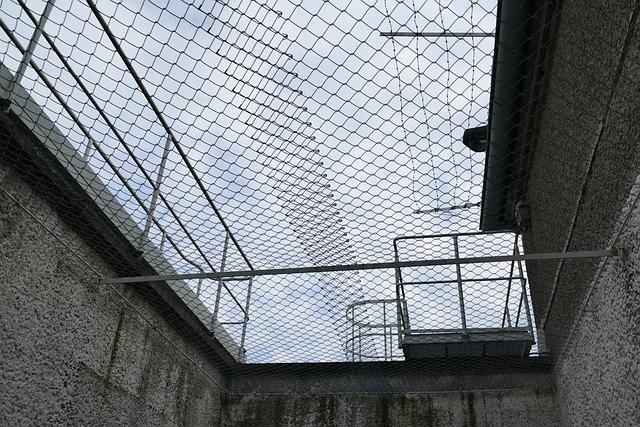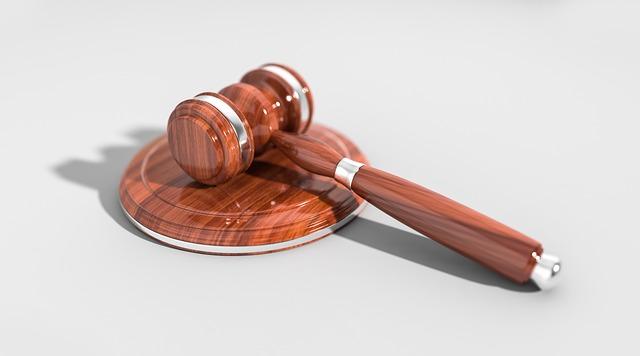In a dramatic turn of events that has reignited the debate over immigration policy and judicial authority, a group of first immigrants from the United States has arrived at one of the most notorious detention facilities in the world, often referred to as the “world’s worst prison.” This situation unfolds in the wake of former president Donald Trump’s controversial decision to defy a federal judge’s ruling aimed at restricting the administration’s hardline immigration policies.As the implications of this defiance ripple through legal and human rights communities, the arrival of these immigrants sheds light on the complex interplay between U.S. immigration policies and international human rights standards. In this article, we delve into the background of the case, the conditions at the detention facility, and the broader impact of trump’s actions on the lives of countless immigrants seeking refuge in America.
First Immigrants from America Arrive at Controversial Detention Facility

The recent arrival of the first immigrants from America at a controversial detention facility has ignited significant public and political debate. This facility, often referred to as the “world’s worst prison,” has long been criticized for its harsh conditions and alleged human rights violations. Activists and legal experts have expressed thier outrage, stating that these actions contravene recent judicial rulings aimed at protecting vulnerable populations seeking asylum.
Following the decision to relocate these individuals, there are several key points of contention:
Legal Challenges: many argue that the move directly defies a judge’s ruling designed to protect the rights of immigrants.
Human Rights Concerns: Reports about the facility have raised alarms about overcrowding, inadequate medical care, and poor living conditions.
Political Repercussions: The decision has further polarized an already contentious political climate, with both sides of the aisle weighing in on the implications of such actions.
As the situation unfolds, it remains to be seen how advocacy groups, lawmakers, and the courts will respond to this controversial decision. legal battles are expected to escalate, with various organizations gearing up to challenge the government’s actions in an effort to uphold the rights of the immigrants affected.
Analysis of the Legal Framework Surrounding Trump’s Actions

The legal landscape surrounding former President Trump’s actions has become increasingly complex, particularly in light of recent developments that challenge judicial authority. The alleged defiance of a judge’s ruling raises not just ethical concerns but significant questions about the implications of such actions on the legal system. Legal analysts highlight several key aspects that are critical for understanding this situation:
Judicial Oversight: Trump’s approach could be seen as a direct challenge to the power of the judiciary, raising concerns about the separation of powers.
Precedent Setting: If this defiance is not legally challenged, it may set a precedent that could weaken future judicial rulings.
Public Trust: consistent challenges to legal authority could erode public confidence in the courts, affecting not only this administration but future governments.
Legal Consequences: Should the courts decide to take action against Trump’s perceived defiance, there could be significant legal repercussions, including contempt of court charges.
Several experts predict that these actions might trigger a series of court rulings that define the boundaries of executive power. The need for clear legal parameters is evident, especially as Trump’s actions could intertwine with broader issues of immigration policy and human rights. Below is a concise overview of the potential repercussions of this situation:
Potential Repercussions
Implications
Legal Challenges
Possible lawsuits could arise from advocacy groups and individuals affected by the rulings.
Increased Scrutiny
Future actions by the executive branch may be more closely monitored by the courts.
Political Fallout
Political opponents may use these actions as leverage in upcoming elections.
The Conditions Inside the World’s Worst Prison: A Closer Look

The conditions inside what is frequently enough labeled as the world’s worst prison are a harrowing reflection of a broken system. Officials and human rights advocates paint a grim picture of overcrowding, inadequate healthcare, and a lack of basic facilities that challenge the very essence of humanity. Here’s a breakdown of some of the most troubling aspects:
Overcrowding: Designed for a fraction of its current population, inmates are forced to live in cramped quarters, often leading to violent altercations.
Nutritional Deficiencies: Reports indicate that many prisoners receive inadequate meals, frequently lacking in essential nutrients, which can lead to severe health issues.
Access to Healthcare: Vital medical treatment is scarce,and inmates often suffer from untreated conditions,exacerbated by poor sanitary conditions.
Isolation and Abuse: Many prisoners endure forms of psychological and physical abuse, isolated from the outside world and without the solace of regular interaction with loved ones.
Furthermore, the psychological toll on inmates is profound.The combination of these factors creates an habitat that undermines rehabilitation efforts and fosters recidivism rather than restoration. The long-term effects of such conditions extend beyond prison walls, affecting communities and families for generations.
As the situation continues to unfold with new arrivals from america, scrutiny from human rights organizations is intensifying. There is a growing call for reform and accountability to address the systemic issues that plague this facility. Society must confront these realities head-on to challenge the unjust practices that persist within its confines.
Implications for Immigration Policy and Human Rights

The arrival of the first immigrants from America to what has been labeled as the “world’s worst prison” raises critical questions about the implications for both immigration policy and human rights. With the backdrop of a judge’s ruling being defied, the situation underscores a troubling precedent in democratic governance and the protection of individual rights. Concerns about the treatment of these individuals, along with broader immigration practices, have sparked debates among policymakers, activists, and the public.
Increased Scrutiny on Detention Practices: The arrival of immigrants in such facilities may lead to heightened scrutiny of detention practices, particularly regarding the conditions and treatment within these institutions.
Legal and Ethical Standards: The defiance of judicial rulings calls into question the adherence to legal and ethical standards that are basic to protecting human rights.
Policy Repercussions: This situation could catalyze changes in how immigration policies are crafted, particularly in defining the rights of immigrants within the legal system.
Moreover, as activists and human rights organizations mobilize against the backdrop of these developments, public sentiment may shift perceptions of immigration enforcement. in response to ongoing challenges, it will be crucial to consider both legislative reforms and community-based initiatives. Policymakers will need to bridge the gap between national security concerns and the obligations to uphold the dignity and humanity of all individuals, regardless of their immigration status.
Concern Category
Potential Impact
Detention Conditions
Heightened scrutiny from NGOs and media
Legal Compliance
Potential legal reforms and challenges
Public Perception
Increased advocacy and community engagement
Recommendations for Reforming Detention Practices

The alarming conditions surrounding detention practices necessitate immediate reform to protect the dignity and rights of individuals. To address the challenges faced by detainees, several recommendations can be put forth:
Implement Comprehensive Oversight: Establish autonomous bodies to monitor detention facilities, ensuring that conditions meet established human rights standards. Regular audits can help maintain transparency and accountability.
Focus on Mental Health Services: Provide adequate mental health support and counseling for detainees, recognizing the psychological toll of confinement. This includes access to trained professionals and emergency psychiatric care.
Enhance Legal Depiction: Ensure that all detainees have access to legal counsel. Providing resources for attorneys can aid in navigating complex immigration proceedings and securing fair treatment.
Promote Alternatives to Detention: expand community-based programs that allow individuals to stay with family members or in supportive environments while awaiting the resolution of their immigration status.
Additionally, a framework based on human rights principles should guide detention policies. This could include:
Principle
Description
Non-Discrimination
All individuals should be treated equally, regardless of nationality, gender, or socioeconomic status.
right to Asylum
Uphold the right of individuals to seek refuge and protection from persecution without facing detention.
Humane Treatment
Ensure that all detainees are treated with respect and dignity, providing adequate food, healthcare, and living conditions.
By adopting these recommendations, we can work towards a more just and humane immigration system that prioritizes safety and respect for all individuals involved.
Public Response and Political Ramifications of Defying Judicial Authority

The arrival of the first immigrants from America to one of the world’s most notorious prisons has incited a wave of public outcry and initiated significant political consequences following the recent decision by former President Trump to ignore a judge’s ruling. Many view this as a bold affront to the established judicial system, raising alarms about the American values of justice and rule of law.
Public opinion reflects deep divisions on this matter, with responses ranging across the spectrum:
Supporters of Trump’s stance argue that his actions are a necessary step in protecting national interests and bolstering immigration reform.
Opponents declare it a perilous precedent that undermines judicial authority and could perhaps lead to further erosion of democratic principles.
legal analysts warn that disregarding court orders could embolden other political figures to challenge the judicial system.
Politically,the ramifications are profound. Many legislators are now grappling with the consequences of this defiance:
Political Impact
Potential Outcomes
Legislative action
calls for new laws to reinforce judicial authority
Public Sentiment
Polarization within party lines may deepen
International Relations
possible strain on foreign relations regarding human rights
The unfolding events not only challenge the role of the judiciary but also stimulate a broader discourse on the accountability of political figures to the laws of the land. As the situation develops, both the public and political spheres will be crucial in shaping the future of America’s governance and judicial integrity.
The Way Forward
the arrival of the first immigrants from America in what has been described as the “world’s worst prison” marks a significant and controversial development in the ongoing saga of U.S. immigration policy.Following President Trump’s defiance of a judge’s ruling, the implementation of this policy raises profound questions about human rights, legal authority, and the treatment of vulnerable populations. As the situation unfolds, international observers, human rights advocates, and legal experts are closely monitoring the implications of this decision. The coming weeks will likely bring further scrutiny and debate about the ethical and legal ramifications of such actions, as well as the future of immigration policy in the United States. Reporting on these developments, LADbible continues to shed light on the complex realities facing those caught in the crossfire of immigration enforcement and policy changes.
—-
Author : Ava Thompson
Publish date : 2025-03-18 13:16:10
Copyright for syndicated content belongs to the linked Source.